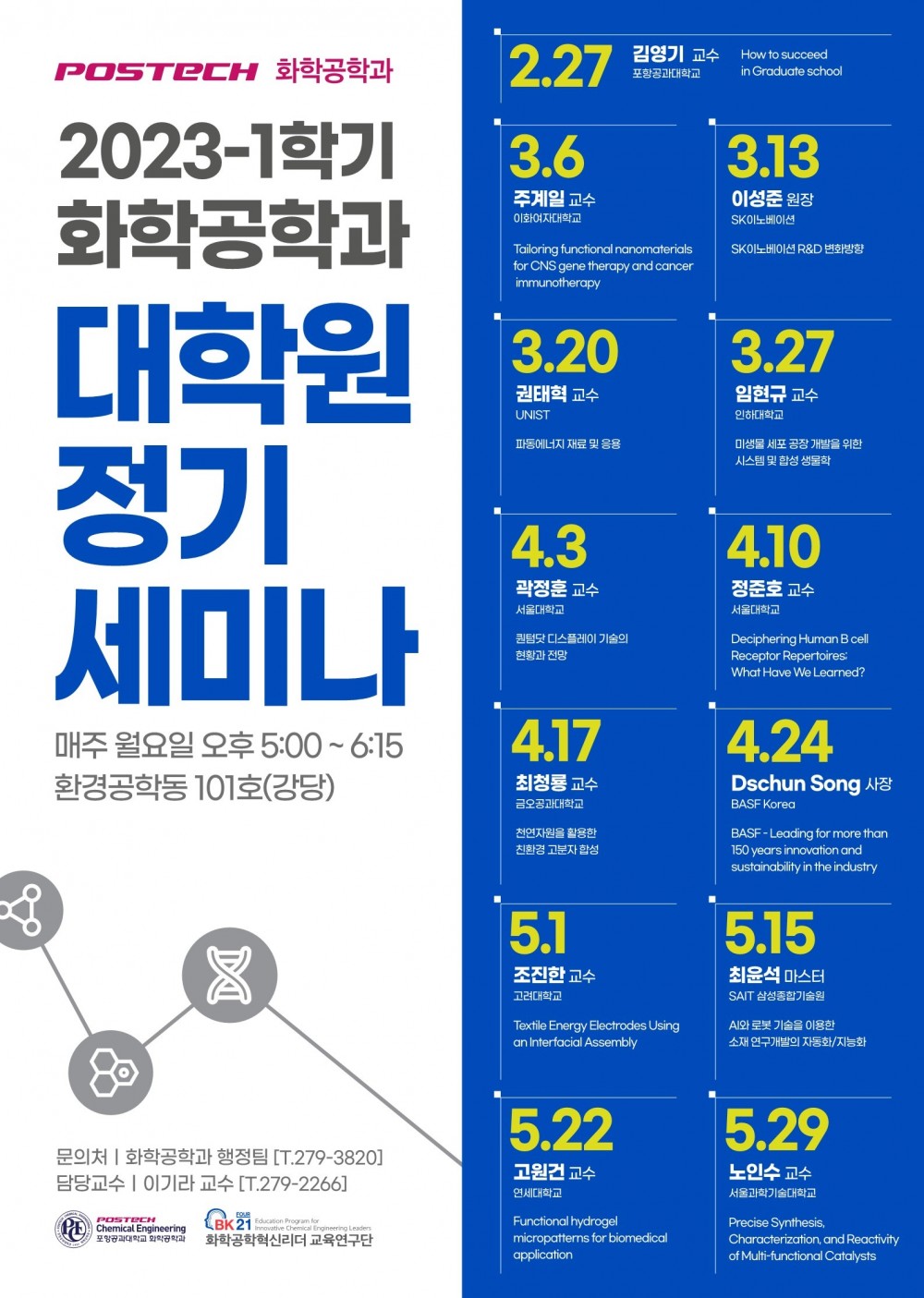
알림마당
정기세미나
미래를 창조하는 포스텍 화학공학과
Wave Energy Materials and Their Applications
- 일자
- 2023.03.20 (월)
- 시간
- 17:00~18:15
- 연사
- 권태혁 교수
- 장소
- 환경공학동 101호 강당
- 소속
- UNIST
제목: Wave Energy Materials and Their Applications
내용: In the 21st century, the world faces more serious problems with energy, environment, food, and disease than ever before. To come up with these fundamental issues, light could be one of the ideal solutions because it is one of nature’s mechanisms for carrying energy and information from one place to another with wavelength and frequency (wave properties). Along with that, my group has researched on light harvesting and storage system for energy recycling, carbon catalysts for the environment and food, and photodynamic therapy for cancer treatment.
First, I will deliver the molecular design strategy of dye-sensitized solar cells (DSCs) for efficient charge transfer, and their applications into the power sources of the internet of things (IoT) and hydrogen generation. Our strategy of electronic coupling for inducing vectorial electron transfer could be potentially generalizable and improve the photovoltaic performance of DSCs. Next, by using low-intensity indoor light, we develop a dye-sensitized photo-rechargeable battery (DSPB), which successfully operated a wireless IoT sensor. We expect DSPB will be an advanced energy device in terms of energy reuse and contribute to a carbon-neutral society by improving the energy efficiency of buildings. Furthermore, DSCs coupled with catalysts in monolithic device exhibit the power source for hydrogen generation. Next, as another type of wave property, my group has researched sonocavitation and nebulization synthesis (SNS) using an ultrasonic spray for the synthesis of frustrated type Lewis acid-base pairs (FLP) doped graphene nanopowder (GN). Acoustic cavitation in SNS creates extreme conditions inside the implosively collapsing bubbles (temperature ≈5000 K, pressure ≈1000 bar), which is a well-known process in sonochemistry. Such conditions permit various chemical reactions that are generally inaccessible. Using this approach, I will present how to synthesize the graphitic FLP catalysts under room temperature and to work as catalysts for CO2, N2 reduction, and urea according to the doping materials on GN.




